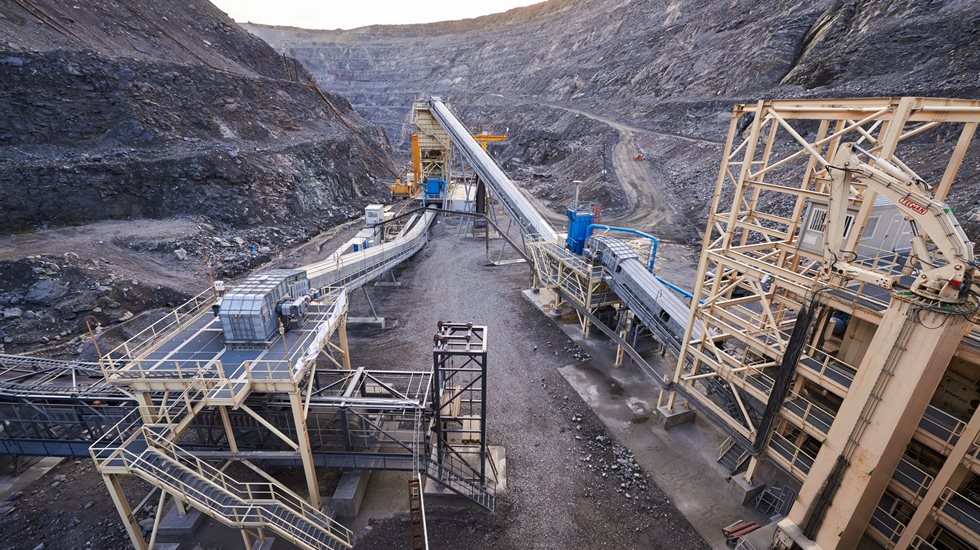We had a chat with two experts, Jorma Kempas and Frédéric Barou, on how Metso Outotec can help our mining industry customers to rethink their operations to make them more sustainable and profitable. Metso Outotec's comprehensive in-pit crushing and conveying solutions (IPCC) trim the operations by optimizing the entire process – from design and the selection of machinery to production. This results not only in a savings of water and energy, but also significant cost reductions – by as much as even 35%.
Q1. How would you describe Metso Outotec's IPCC offering?
Our offering includes fully mobile IPCC systems for hard rock mining with a current capacity range of up to 3,000 t/h – but we’re not limited to that number. As major IPCC players, we also offer relocatable, or semi-mobile, IPCC systems of up to 10,000 t/h, and we can equip them with excellent maintainability features. Enhanced availability appears to be a key factor: our customers require high annual throughput, for which our engineering offers proven solutions.
Q2. Is it fair to say that Metso Outotec’s core IPCC product range has grown out of the smaller hard rock mining and quarrying market?
That’s certainly true for the Lokotrack® and LokolinkTM fully mobile IPCC systems, which were originally developed for the needs of aggregate and cement producers. But some of the other components, such as primary gyratory crushers, engineered relocatable crushing stations, conveying know-how and apron feeders, are also well established in the world of mining.
Q3. How important to Metso Outotec are environmental aspects, such as lowering energy and water and fuel requirements?
The environment and safety are key values for us. Our IPCC solutions lower production costs and offer ways to reduce fuel and water consumption, reduce emissions, and improve work safety – and all this is great motivation for us to encourage customers to utilize this potential more fully than they previously have. In the relocatable gyratory stations, we will release smart energy-efficient drive controls for the crushing process, enabling operators to optimize their energy consumption per ton.
Q4. Can you describe more in detail the Lokotrack-Lokolink combination and the combinations possible for the different types of mines?
The Lokotrack® and LokolinkTM combination is a unique concept that enables the primary crusher to follow a face shovel and make the necessary relocations in the shortest possible time. It is safe to say that, for suitable applications, a combination of Lokotrack® and LokolinkTM offers the most cost-effective way to operate. Unfortunately, not all types of operations are optimal for using this equipment set-up, such as those with complex deposits and operations that require blending multiple ore qualities, etc. However, with proper planning, it is possible to adopt Lokotrack®+LokolinkTM systems for more demanding applications as well.
Q5. Why has Metso Outotec chosen to only stick with jaw crushers in its fully mobile IPCC solutions when you also manufacture large gyratory crushers?
We has worked on a number of projects for track-mounted primary gyratory crushers, but none of these projects have been implemented before. The market tendency has been for semi-mobile, or relocatable, primary gyratory crusher installations, and Metso is responding to this demand with a wide range of engineered solutions depending on the degree of relocation.
Q6. You have talked about the importance of pre-concentration in successful ITPS solutions. Have you applied these technologies in any of your projects to date?
Pre-concentration is quite established for industrial minerals and selected ores at low throughputs. However, the search for bulk ore sorting solutions at high throughputs is still going on. We have one pilot pre-concentration project under way in South America, which we will comment on at a later stage of project development.
Q7. In conclusion, where do you see the cut-off between fully mobile and semi-mobile solutions based on the mine type and mine requirements?
There is no clear cut-off, as either system can be considered for almost any operation. In general, the semi-mobile solution offers higher flexibility due to the use of trucks for hauling, and is therefore less challenging to implement in existing mines as well as with highly complex deposits.


